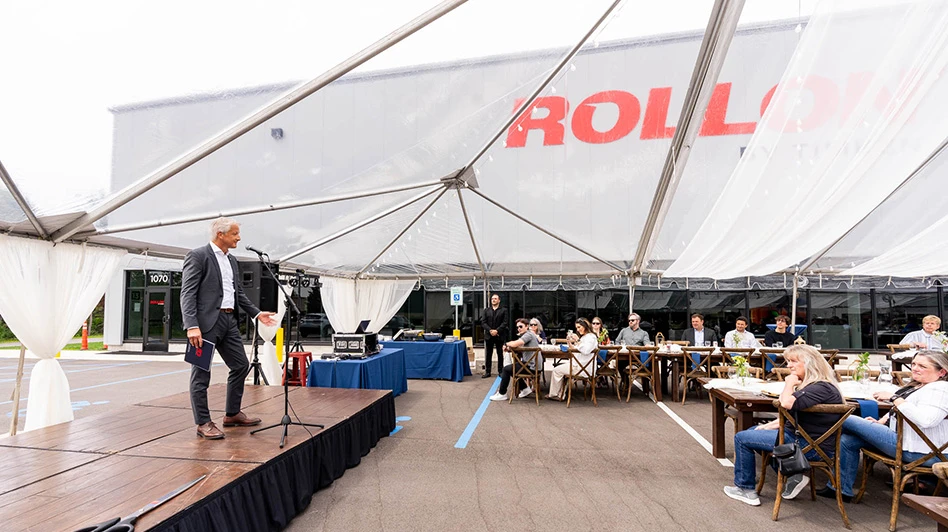 Extremely early detection of cancers and other diseases is on the horizon with a supersensitive nanodevice being developed at The University of Alabama in Huntsville (UAH) in collaboration with the Joint School of Nanoscience and Nanoengineering (JSNN) in Greensboro, North Carolina.
Extremely early detection of cancers and other diseases is on the horizon with a supersensitive nanodevice being developed at The University of Alabama in Huntsville (UAH) in collaboration with the Joint School of Nanoscience and Nanoengineering (JSNN) in Greensboro, North Carolina.
The device is ready for packaging into a lunchbox-size unit that ultimately may use a cellphone app to provide test results.
“We are submitting grant applications with our collaborator, Dr. Jianjun Wei, an associate professor at the JSNN, to the National Institutes of Health to fund our future integration work,” says Dr. Yongbin Lin, a research scientist at UAH’s Nano and Micro Devices Center who has been working on the nanodevice at the core of the diagnostic unit for about five years. “In the future, we will do an integration of the system with everything inside a box. If we get funding support, I think that within three to five years, it may be realized.”
According to Lin, the sensitivity of the equipment holds promise for finding cancer at a very early stage, as a small cluster of cells, when it is easier to treat.
One such test detects minute levels of Interleukin-6 (IL-6) in the bloodstream. IL-6 is secreted by the body’s T-cells and macrophages to stimulate inflammatory and immune responses.
“If you have a cancer, then your basic level of IL-6 will increase,” Lin says. “A lot of cancers have links to IL-6.”
Heightened IL-6 could also signal inflammation indicating the presence of other conditions. The scientists are also developing tests for prostate specific antigen (PSA), an indicator of prostate cancer, but the device could be calibrated to test for any protein antigen biomarkers.
Once packaged, the portable device will offer point-of-care use, providing quick results without a testing laboratory.
“We don’t have to send your blood sample anywhere. We just bring this to your bedside,” Lin says.
A 125µm diameter nanoprobe with gold nanodots on a 4µm fiber core is at the heart of the machine. Each gold nanodot is a disc 160nm in diameter, Lin says. The nanoprobe is so small that it has to be assembled using an electron microscope. The probe is coated with a biochemical link so that specific antibodies for the particular test will attach to it.
That test is based on light refraction from antigens bound to the antibodies on the nanoprobe. The properties of the nanoparticles will give a resonance shift upon a biological binding reaction, Lin explains. The fiber optic strand on which the sensors are attached directs the resulting light waves to a spectrometer and a computer determines the test result.
“It’s personalized medicine but it’s also a form of preventative medicine,” says Taylor Bono, a UAH senior pursuing a medical career and has helped with the research.
Bono did some of the early sensitivity testing work along with UAH senior Molly Sanders, who is an undergraduate concurrently working on her master’s degree in biology as part of UAH’s Joint Undergraduate Master’s Program.
“Even though I was unfamiliar with physics, I could help with the biological side of it. I never would have known anything about this if I hadn’t had this opportunity,” Sanders says. “The most significant aspect of the device medically is that it can detect trace levels of cancer biomarkers in the blood.”
The lab work is now the responsibility of UAH junior Savannah Kaye, who tests the nanoprobe tip in two different solutions to see if antibodies will stick to it.
UAH Associate Vice President for Research Dr. Robert Lindquist, the former director of the Center for Applied Optics, was an early contributor to the research, Lin says, noting Lindquist is a strong supporter of this project.
University of Alabama in Huntsville (UAH)
www.uah.edu

Explore the April 2015 Issue
Check out more from this issue and find your next story to read.
Latest from Today's Medical Developments
- Diagnosis: Workflow Inefficiency | Treatment: Okuma Robot Loader Series
- Discover the future of manufacturing at GROB's 5-AXIS LIVE!
- Revolutionizing quality control with Hexagon's Autonomous Metrology Suite
- Autocam Medical's $70 million expansion to boost orthopedic job creation
- Platinum Tooling unveils new product catalog
- Meet the minds shaping CNC grinding at The Precision Summit
- Mitutoyo unveils innovative SurfaceMeasure-S Series sensors
- #69 Manufacturing Matters - Shopfloor Connectivity Roundtable with Renishaw and SMW Autoblok





